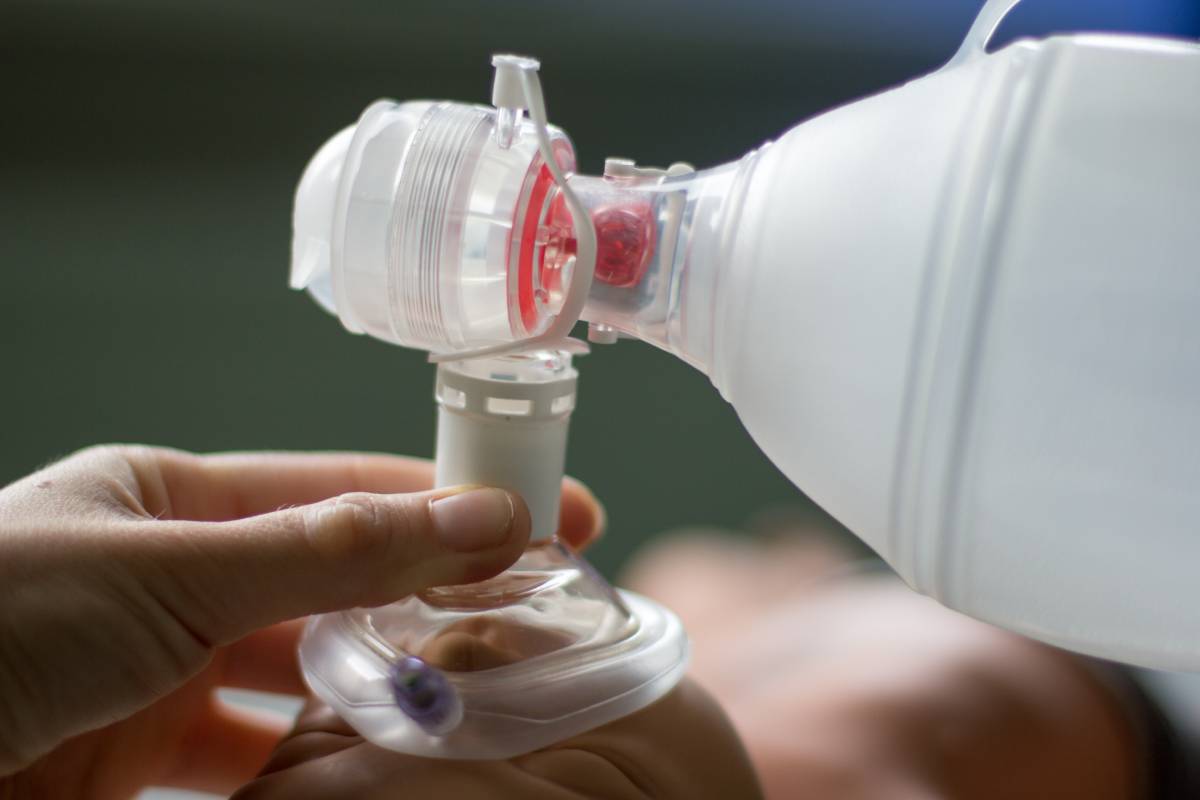Because the lungs are one of the last organs to fully develop and are not able to ventilate until after delivery, approximately 10% of newborns require some form of positive pressure ventilation in the first few hours of life (3). Because of this vulnerability to hypoxia (low oxygen levels in the blood) and hypoxia-associated damage, it is essential that the ventilator mask is placed correctly, and that the newborn is in the optimal position to avoid airway obstruction (3). Despite this, brief airway obstruction occurs in up to 25% of late preterm neonates during positive-pressure ventilation (PPV), leading to a higher risk of complications and invasive intubation (3). Head position is a key factor for successful neonatal mask ventilation.
One of the more commonly used positions currently described for neonatal mask ventilation is the “sniffing” position, in which the infant’s neck is flexed with upper cervical extension (3). Dr. Alfred Kirstein, a German physician and the inventor of the laryngoscope, coined this position in 1895, and it became widely used in 1913 with routine laryngoscopies (1). This position is helpful even for neonates that are breathing on their own, as it helps maintain latency of the upper airways (1). Another commonly used position is the “neutral” position, in which the gaze is directly upward, the cervical spine is neither flexed nor extended, and the shoulders are elevated to help maintain the head in this position (1). However, there has been limited research to fully evaluate the benefits of these two head positions for neonatal mask ventilation (1). Another helpful maneuver to minimize airway obstruction is by lifting the chin, which widens the pharynx and minimizes airway obstruction from a posteriorly displaced epiglottis. While the effects of this position on the newborn have not been studied either, they did find that in spontaneously breathing adult patients with airway obstruction, chin lift resolved the obstruction in half of these patients (1). However, studies on anesthetized patients in the OR showed that the chin lift did not improve airway patience in most patients (1). And finally, the jaw thrust is another technique that is recommended for improving airway patency, and it does so by lifting the tongue and epiglottis, widening the pharynx and reversing the collapse of the laryngeal outlet (1). The problem with the jaw thrust is that, despite evidence of improved airway obstruction with this maneuver, no one has described a standardized way of performing the jaw thrust (1).
Studies have shown that using a standardized protocol for neonatal resuscitation improves morbidity and mortality, particularly decreasing incidence of hypoxic ischemic encephalopathy and other negative developmental outcomes (2). Since the “sniffing position” is one of the more commonly used head positions in neonatal mask ventilation, a recent study in Pediatric Anesthesia aimed to clarify a standardized, objective angle for the sniffing position that can be reproduced by all clinicians (3). In this study, they used the midpoint of the upper contour of the external auditory canal as the landmark by which to create an angle with surface on which the infant was lying and defined sniffing position as when the tip of the nose aligned to the ceiling (3). By using visible facial landmarks, this study was able to define an objective, reproducible angle at which to position an infant during mask ventilation (3). They did not however test whether or not this newly defined angle actually improved outcomes for neonates undergoing mask ventilation, and this is a knowledge gap that should be further studied before this angle is applied to regular practice (3).
Since so many newborns require mask ventilation of some sort, clarifying an evidence-based protocol to improve outcomes and decrease complications such as mask leak and airway obstructions is an important area of research.
References
1. Chua C, Schmolzer GM, Davis P. Airway manoeuvres to achieve upper airway patency during mask ventilation in newborn infants – An historical perspective. Resuscitation, 2012; 8(4): 411-416. doi: 10.1016/j.resuscitation.2011.11.007
2. Dempsey E, Pammi M, Ryan AC, Barrington KJ. Standardised formal resuscitation training programmes for reducing mortality and morbidity in newborn infants. Cochrane Database System Review, 2015 Sep 4;2015(9):CD009106. doi: 10.1002/14651858.CD009106.pub2. PMID: 26337958; PMCID: PMC9219024.
3. Haase B, Badinska AM, Poets CF, Koos B, Springer L. An approach to define newborns´ sniffing position using an angle based on reproducible facial landmarks. Paediatric Anestheisa,. 2021 Apr;31(4):404-409. doi: 10.1111/pan.14154. Epub 2021 Feb 28. PMID: 33555071.
